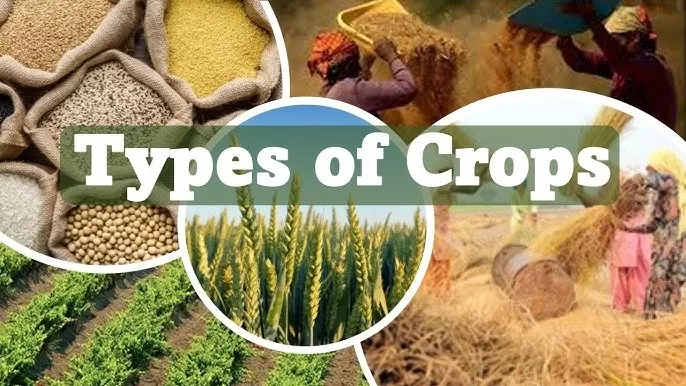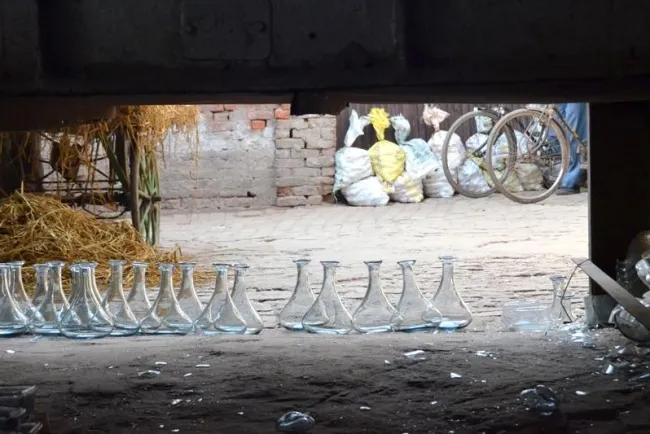Comprehensive Guide to Cultivating Different Crops...!!!
These cultivation practices ensure successful harvests for each crop, tailored to their unique requirements and management.

Cultivation of Various Crops
1. Rice Cultivation:
Rice, a vital staple food globally, thrives in warm, humid climates with ample water. The cultivation of rice involves several key steps:
-Land Preparation: Fields are plowed and leveled to ensure even water distribution. Bunds (raised barriers) are constructed to retain water in the fields.
-Nursery Preparation: Rice seeds are sown in nurseries, where they germinate and grow into seedlings over a few weeks.
-Transplantation: Seedlings are transplanted into the main field, which is flooded with water, helping control weeds and pests.
-Water Management: Continuous flooding is essential during rice's growth stages. Proper water management prevents water stress and ensures healthy growth.
-Fertilization: Fertilizers containing nitrogen, phosphorus, and potassium are applied to promote crop growth.
-Pest and Disease Control: Regular monitoring and the use of pesticides and fungicides protect the crop from pests and diseases.
-Harvesting: When rice grains mature and turn golden, they are harvested, dried, threshed, and processed.

2. Wheat Cultivation:
Wheat, a staple food in many regions, grows well in temperate climates and requires less water than rice. The cultivation of wheat includes:
-Soil Preparation: Fields are plowed and harrowed to create a fine seedbed.
-Sowing: Wheat seeds are sown using seed drills or broadcast manually, at an ideal planting depth of about 2-3 cm.
-Irrigation: Timely irrigation is crucial, especially during germination, tillering, and flowering stages.
-Fertilization: Essential nutrients like nitrogen, phosphorus, and potassium are applied at various growth stages.
-Weed Control: Herbicides are used to control weeds that compete with wheat for nutrients and sunlight.
-Pest and Disease Management: Regular monitoring and appropriate pesticides help protect the crop from pests and diseases.
-Harvesting: Wheat is harvested when the grains are fully mature and dry, then threshed and processed.
3. Maize (Corn) Cultivation:
Maize, a versatile crop grown for food, fodder, and industrial purposes, thrives in warm climates with well-drained soil. The cultivation of maize involves:
-Soil Preparation: Fields are plowed and harrowed to create a fine seedbed.
-Sowing: Maize seeds are sown using seed drills or planters, at an ideal planting depth of about 3-5 cm.
-Irrigation: Regular irrigation is needed, especially during germination, flowering, and grain filling stages.
-Fertilization: Essential nutrients like nitrogen, phosphorus, and potassium are applied at different growth stages.
-Weed Control: Herbicides are used to control weeds that compete with maize for nutrients and sunlight.
-Pest and Disease Management: Regular monitoring and appropriate pesticides help protect the crop from pests and diseases.
-Harvesting: Maize is harvested when kernels are fully mature and dry, then dried, shelled, and processed.

4. Potato Cultivation:
Potatoes, a popular root crop grown in temperate and subtropical regions, involve the following cultivation steps:
-Soil Preparation: Fields are plowed and harrowed to create a fine seedbed, with well-drained soil rich in organic matter.
-Planting: Potato tubers are cut into seed pieces and planted in rows at a depth of about 5-10 cm.
-Irrigation: Regular irrigation is essential, especially during tuber formation and growth stages.
-Fertilization: Nutrients like nitrogen, phosphorus, and potassium are applied at various growth stages.
-Weed Control: Herbicides are used to control weeds that compete with potatoes for nutrients and sunlight.
-Pest and Disease Management: Regular monitoring and appropriate pesticides help protect the crop from pests and diseases.
-Harvesting: Potatoes are harvested when plants die back, and tubers are fully mature. The harvested potatoes are then dried and stored.
What's Your Reaction?

















